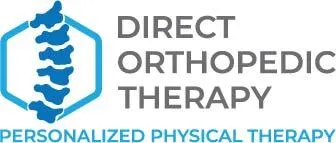Rehabilitation centers, sports and fitness centers, hospitals, schools, and workplaces employ licensed physical therapists. Physical therapy can treat a wide range of conditions, including neurological, genetic, and musculoskeletal abnormalities, as well as ordinary ailments like dizziness.
Direct Orthopedic Therapy offer different services, Read more.
Physical therapists commonly treat the following medical conditions:
Lymphedema:
Swelling is caused by an accumulation of extra fluids in the lymphatic system, which circulate throughout the body. Physical therapists employ a method called complete decongestive treatment (CDT) to treat swelling and prevent its return.
Injuries sustained while participating in a sport:
Stress fractures, for example, can be treated safely and quickly with suitable recovery regimens or preventative exercises.
Dystrophy of the Muscles:
As we age, our muscles and skeletons atrophy and weaken. Mobility exercises and supporting frameworks can help with this.
Pain in the Back and Neck:
People with acute or chronic pain in their back and neck cannot carry out their typical daily activities. Physical therapy has numerous benefits.
Limitation in Motion:
Swelling or soreness can occur in specific locations of your body due to excessive stress brought on by the overuse of specific areas. Anger of motion is hindered, but therapy can restore it. Physical therapy improves both flexion and extension.
Osteoporosis:
Sponge-like bones are thin and brittle due to the numerous holes they contain. However, disabling fractures can be avoided with timely treatment.
Vertigo:
Many people suffer from dizziness or lightheadedness, leading to deadly falls. Treating vertigo is possible thanks to physical therapy’s ability to improve balance.
Headaches:
Migraine and tension-type headaches can lead to severe head or neck injuries. However, neck mobility can be improved, and upper back muscles strengthened with a well-thought-out treatment strategy.
Carpal Tunnel Syndrome:
Sitting at a computer all day can cause repetitive stress injuries. However, changing your posture and practicing stretches and exercises can help alleviate wrist pain and injury.
Myalgic Encephalopathy/ Chronic Fatigue Syndrome:
The exhaustion that comes with this illness is terrible and will not go away even after a good night’s sleep. Physical therapists and doctors work together to create a treatment plan that includes patient endurance training exercises.
Inhalation and exhalation problems:
Diaphragmatic breathing exercises can strengthen the lungs to cure chronic bronchitis and other respiratory conditions.
Huntington’s disease:
As Huntington’s disease progresses, both voluntary and involuntary motions are impacted. Physical therapy can help alleviate spasms, impaired speech, and a shaky gait.
An ailment of the Knee Ligament:
Ligaments, which are bands of tissue on either side of the knee, can be destroyed by injuries that occur in contact sports or if a person is hit hard.
Dysfunction of the Pelvic Floor:
Correct posture and lifting and carrying weights appropriately can help alleviate pelvic floor diseases and sexual problems, especially in women.
Cancer:
Many cancer patients suffer from extreme pain and incapacity due to their treatments. Physical therapists can identify and address deficits that can be used to manage the effects of cancer.
Conclusion:
Physical therapy can be highly beneficial for several medical disorders. Contact a reliable physiotherapist to start enjoying life to the fullest!
Reach out for more information.


